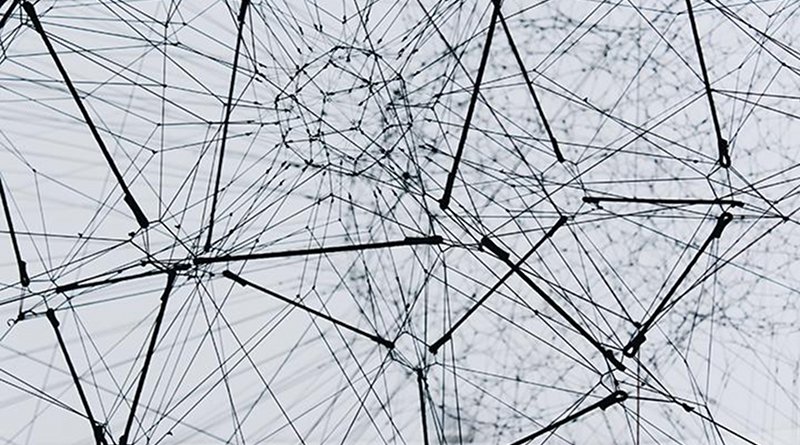New Method Of Analyzing Networks Reveals Hidden Patterns In Data
A new way of measuring how relationships in a network change over time can reveal important details about the network, according to researchers at Penn State and the Korean Rural Economic Institute. For example, when applied to the world economy, the method detected the greatest amount of network change during 2008-2009, the time of the global financial crisis.
“Most existing approaches only capture relationship changes in a network one network member at time,” said Stephan Goetz, professor of agricultural and regional economics, Penn State, and director of the Northeast Regional Center for Rural Development (NERCRD). “Our measure allows us to see how these relationships change over time across the entire network, which will give us potential new insights into how networks behave, as well as the impacts of those changes.”
According to Goetz, networks of all types are represented visually by individual nodes connected to one another by lines, or links. The familiar airline hub-and-spoke map is one example. Each node represents an entity in a network — an airport, a person, a business, or a country, for example. The links between two nodes represent their connection or relationship.
“Think about your own network of relationships, with each person in your network represented by a node and your connection to them represented by a link. Over time, some people might drop out, others might come in, some relationships get stronger, others weaken,” Goetz said. “Because most networks change over time, this configuration of nodes and links also changes.”
This change from one period to the next is represented by a change in the angles formed by the nodes and links, and these angles are the focus of the study, which was published on July 24 in PLOS ONE.
Goetz and his co-author, Yicheol Han, a research fellow at the Korea Rural Economic Institute in Nasu-si, South Korea, and formerly a research associate at NERCRD, turned to a familiar mathematical measure called the cosine similarity, which is traditionally used to measure the orientation of the angles between points and lines radiating from the points. When applied to network science, cosine similarity allowed the researchers to measure the size of the change in any given relationship, both relative to itself and to the overall network.
To test their new measure, the researchers applied it to several real-world networks, including the World Input-Output (I/O) Table, which documents economic transactions on a yearly basis both across and within nations. Focusing on the years 2000-2014, they found that the greatest amount of network change, which they refer to as “rewiring,” occurred during 2008-2009. This was not unexpected, due to the Global Financial Crisis which occurred during those years.
“Rewiring is another way of thinking about reorganization, in this case,” Goetz said. “Our findings show what a tremendous shock the world financial crisis was. It’s interesting that the measure picked this up so strongly, and that it can be used as a new way of quantifying how the economy adjusted after the shock.”
Their measure also showed a pronounced downward trend in rewiring after 2010, which they hypothesize may have contributed to the unusually slow recovery from the recession.
Next, the team looked at three individual countries — the U.S., Germany and China — to see how the rewiring in these countries’ economies compared. While the U.S. and Germany followed a similar pattern as the overall world economy, China exhibited a significantly different pattern, with a spike in its rewiring occurring both before and after the financial crisis. However, to Goetz’s surprise, they found that the financial crisis was not the most significant shock to the Chinese economy during this time period.
“The rewiring measure shows that joining the World Trade Organization in 2003 was a bigger shock to the Chinese economy than the Great Recession,” Goetz said. “I’m not aware that anybody has shown this using any other measure.”
Goetz and Han also looked at how rewiring in several nations’ economic I/O tables affected their compound annual income growth rate per capita, the “holy grail” of economic measures, according to Goetz.
“We found that whether countries belonging to the Organization for Economic Cooperation and Development rewired a lot or a little didn’t make much difference to their compound annual growth rate,” said Han. “On the other hand, former Soviet Union nations really benefitted from rewiring. The more they rewired, the more their annual growth rate increased. We think it’s because they only recently became market economies and lack mature institutions and other adjustment mechanisms to recession, so rewiring has more of an impact on their growth.”
Future research will look at how the measure can be applied to rural economies, to see how these areas may or may not benefit from rewiring.
“That has the potential to lead to new ways of looking at how rural areas in the U.S. can develop and adjust to emerging shocks and other structural challenges,” Goetz said.

